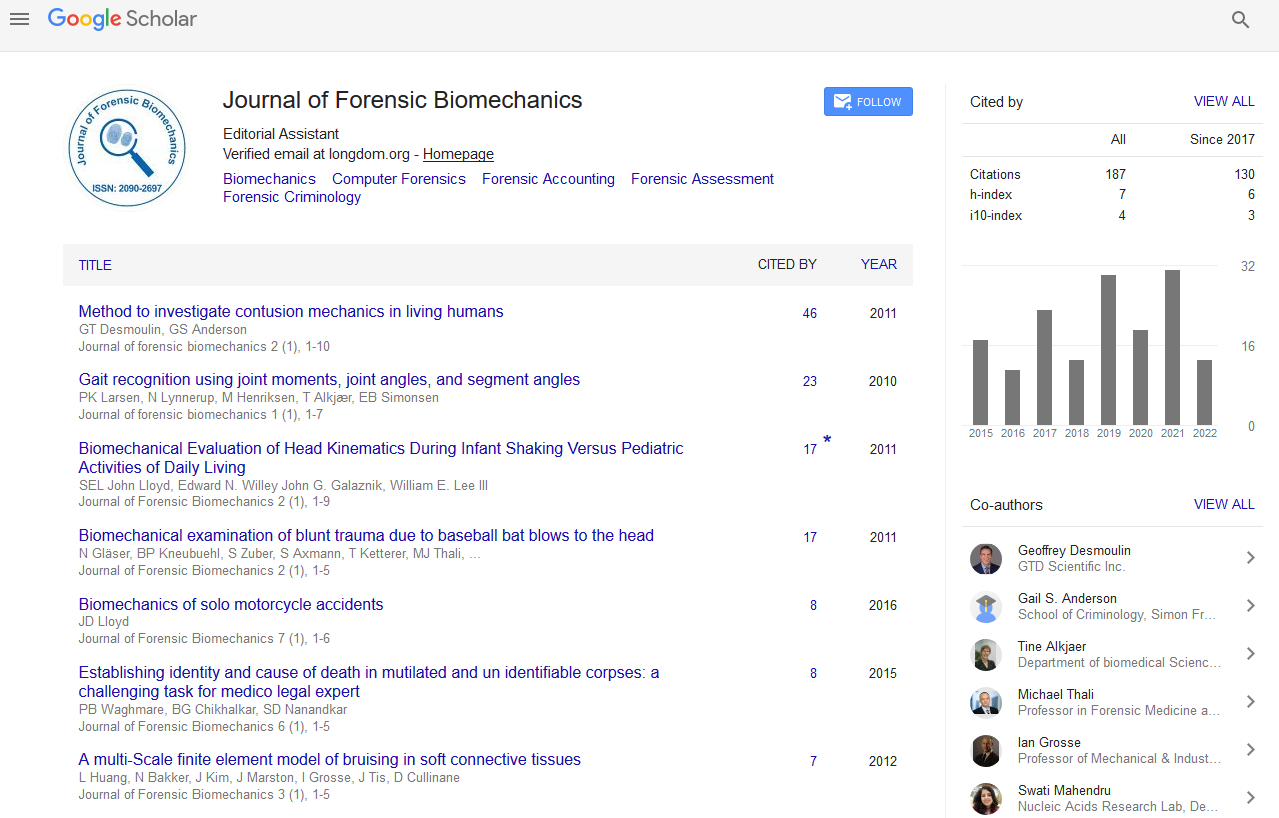Indexed In
- Genamics JournalSeek
- SafetyLit
- Ulrich's Periodicals Directory
- RefSeek
- Hamdard University
- EBSCO A-Z
- Geneva Foundation for Medical Education and Research
- Euro Pub
- Google Scholar
Useful Links
Share This Page
Journal Flyer

Open Access Journals
- Agri and Aquaculture
- Biochemistry
- Bioinformatics & Systems Biology
- Business & Management
- Chemistry
- Clinical Sciences
- Engineering
- Food & Nutrition
- General Science
- Genetics & Molecular Biology
- Immunology & Microbiology
- Medical Sciences
- Neuroscience & Psychology
- Nursing & Health Care
- Pharmaceutical Sciences
Abstract
Discriminating Between Maximal, Submaximal and Feigned Isokinetic Shoulder Flexion and Extension Strength Efforts Using Frequency Content Analysis
Sivan Almosnino and Zeevi Dvir
Background: Assessments of muscular strength capabilities are routinely performed in the medico-legal setting for aiding in determination of impairment ratings, possible disability status and compensation following injury. However, a basic tenet in the use of strength scores is that maximal voluntary efforts were exerted during testing. There is a paucity of methods for ascertaining the exertion of such efforts during shoulder muscular testing. Therefore, the purpose of this investigation was to assess whether a novel measure, namely the isokinetic dynamometry- based moment signal’s frequency content, may be used for purposes of differentiating between maximal, sincere submaximal and feigned shoulder flexion/extension efforts.w
Methods: 27 participants performed 3 sets of 5 shoulder concentric flexion/extension repetitions through a 60° of range of motion at angular velocities of 30°sec-1 and 120°sec-1. The sets consisted of maximal efforts, an attempt to feign muscular strength capabilities for financial gain, and a set of sincere submaximal efforts performed at a self-selected level. Moment data were transformed into the frequency domain using the Fast Fourier transform algorithm, and signal’s frequency content contained within 95% and 99% of total signal power were extracted as outcome measures. Tolerance interval based cut-off scores were subsequently calculated to discriminate between maximal and non-maximal attempts.
Results: On average, maximal effort strength records exhibited lower frequency content than both feigned and sincere submaximal attempts. In terms of discriminatory performance, the best performing tolerance interval based cut-off scores meant of differentiating between maximal and non-maximal efforts yielded specificity and sensitivity values of 92.6% and 70.4%, and 100% and 72.2% for the low and high testing velocities, respectively.
Conclusion: The performance of the cut-off scores suggests that the moment signal’s frequency content significantly contributes to the ability to differentiate between maximal and non-maximal efforts.

